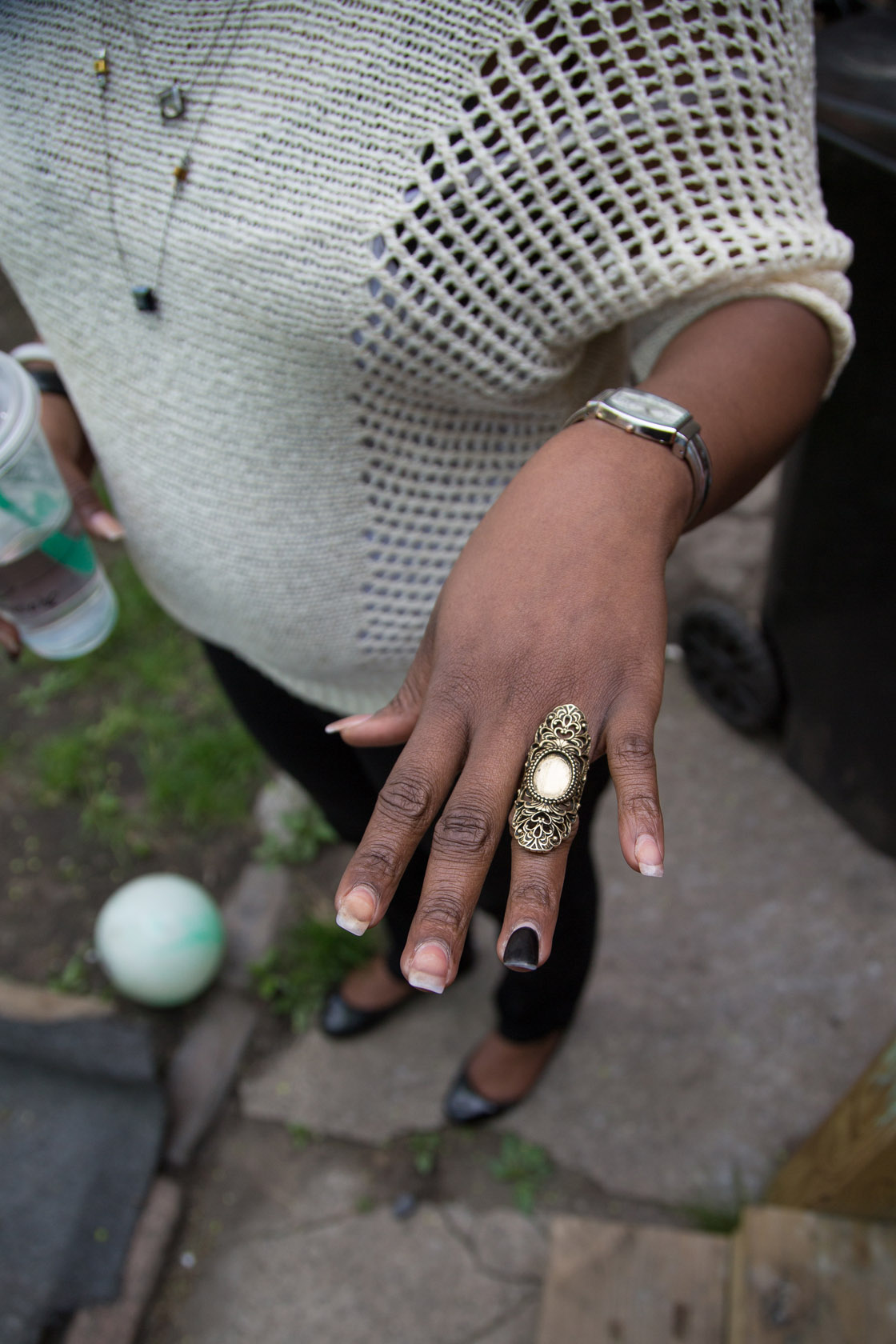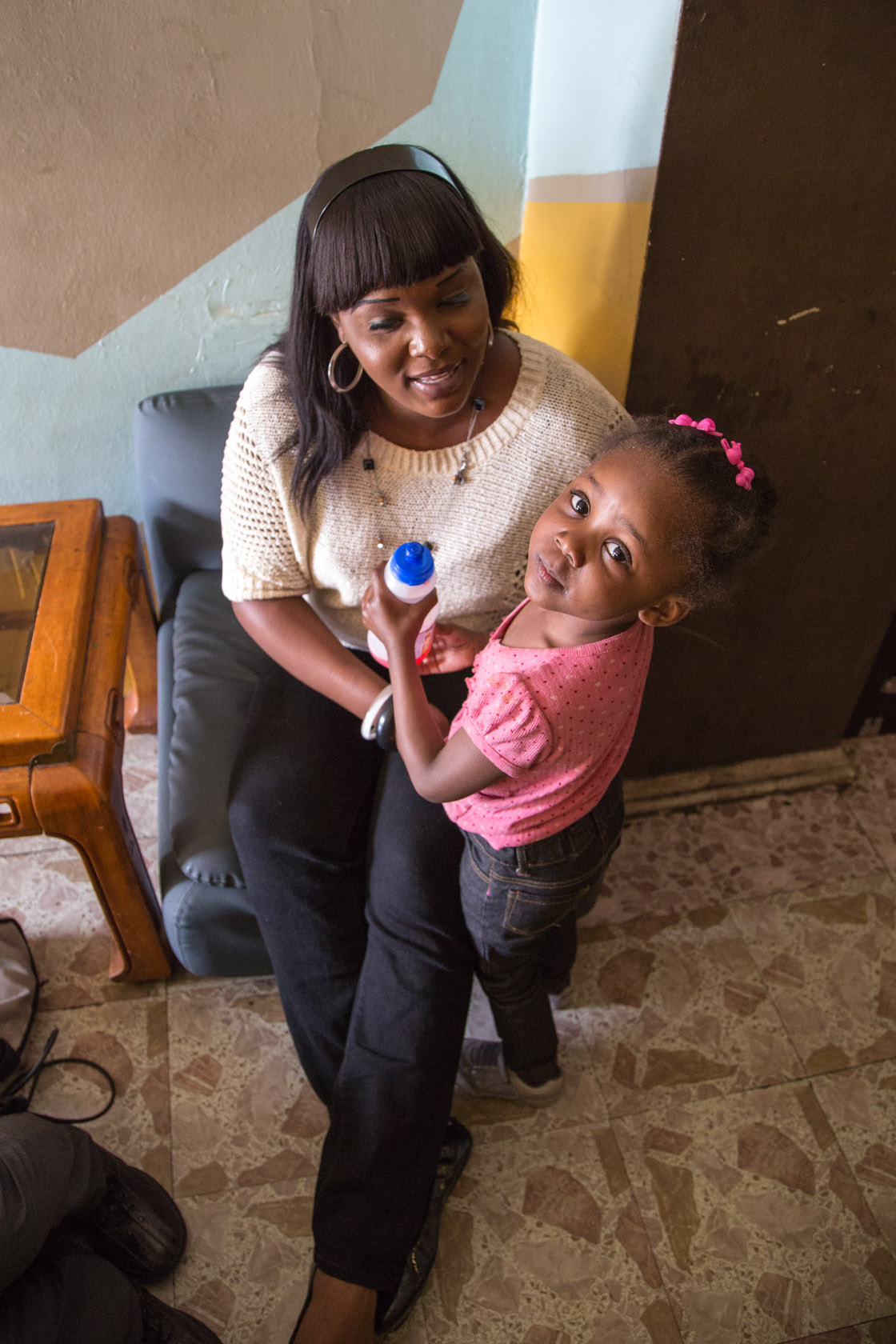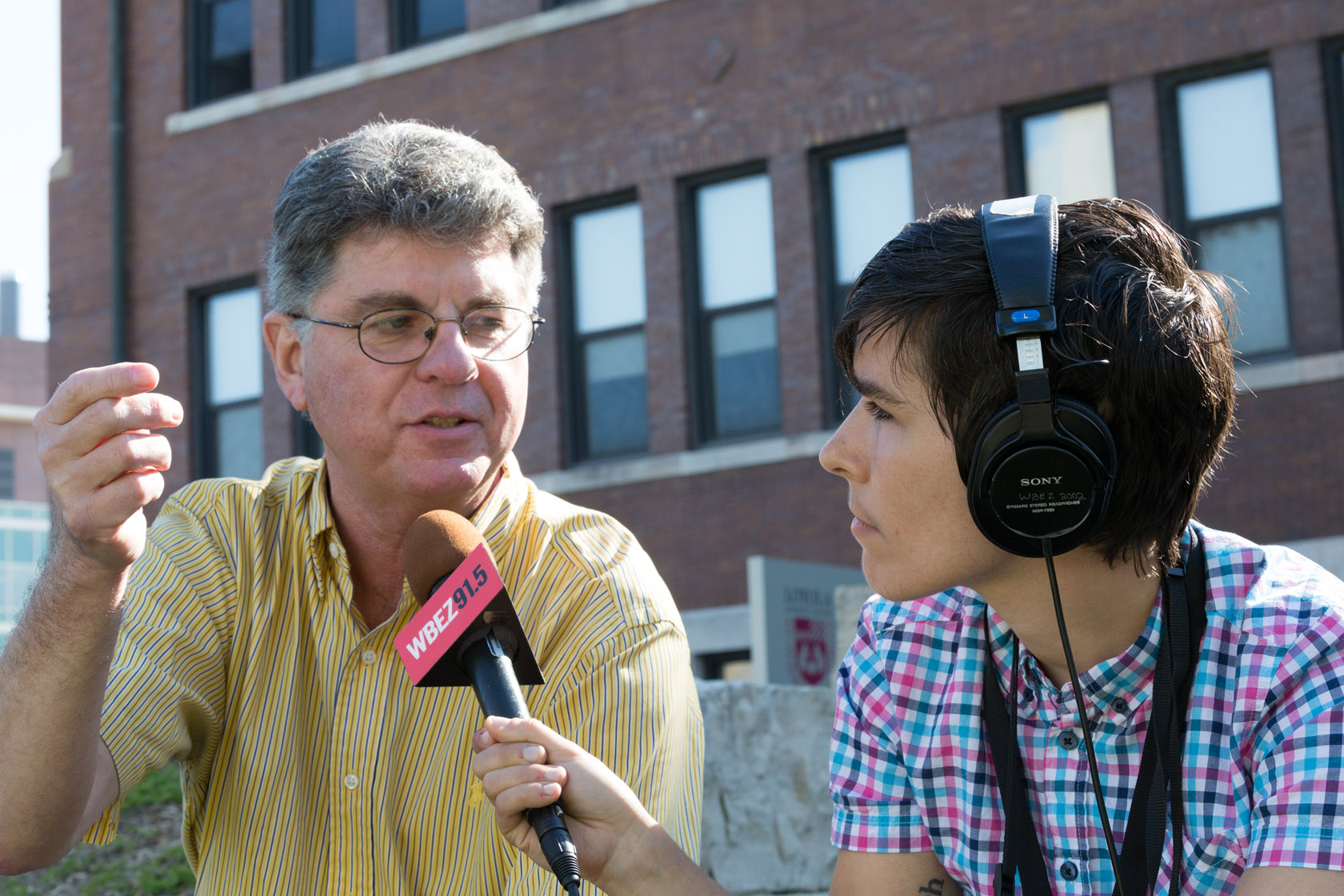

Listener Maggie Cassidy recently got a master’s degree in urban planning. She hasn’t found a job in her field yet, so she’s now working for about $10 an hour at two different part-time jobs. She said her own hustle has made her think seriously about people who hustle for even less. Little wonder, then, that she asked Curious City:

What is it like to live on a minimum-wage job in Chicago?
And Maggie got even more specific. She wanted to know who lives on Illinois’ state minimum wage of $8.25 an hour, and why.
“What is it like for people for whom this is their only option?” Maggie asked.
Well, it’s an opportune time for this question, because low-wage work is increasingly common in the Chicago area and nationwide. Since the 2008 recession, the majority of job growth has been in lower-wage positions, while middle class jobs have bounced back more slowly.
Recent debates at the national, state and local level about what the minimum wage should be, and whether raising that minimum wage is bad or good for business, have brought the issue to the forefront. Here I’m going to focus on Maggie’s very personal question: What is it like to live here in Chicago on minimum wage, and who does it?
Someone who’s been waiting for us to ask
Krystal Maxie-Collins was 28 years old when I interviewed her for this story. Her last birthday (May 23), didn’t go as planned.
“Last year sucked,” said Maxie-Collins. She’s worked at Macy’s downtown for two years at minimum wage, with commissions on top of that. She has another part-time minimum wage job conducting phone interviews for a research center. Last May 23 she was expecting a decent deposit — nearly $500 — to drop into her account in the early evening.
She planned to do something fun, maybe get her hair done or go out.
“My check did not hit until 11:53 that night,” she said. “I’m like, it’s my birthday and all I did was sit around the house waiting on my money to hit my account.”
Maxie-Collins has four children (the oldest is nine, the youngest is three), a fiance who also works a minimum wage job downtown, and very little free time.
“I have been waiting for someone to ask me about how my day goes,” said Maxie-Collins, settling into a soft gray chair in her West Englewood home.
A typical day for Maxie-Collins starts around 6 a.m. She gets dressed, makes breakfast, gets her kids ready for the day and flies out the door to a bus to get downtown. Selling shoes at Macy’s is a grind: She has to meet daily sales quotas in order to qualify for commissions. She takes few breaks, she says. After Macy’s, Maxie-Collins often hurries to her other job, where she sometimes stays until ten at night. She attends jobs several days a week, but her schedule varies.
Her brother-in-law cares for the kids while their parents are at work, and her two older children are with their father in Indiana for the year because Maxie-Collins didn’t want them to be in Chicago Public Schools, at least not while some schools are threatened with closure.
Despite constantly working, Maxie-Collins says she’s barely surviving.
“At the end of the week, I still don’t have enough money to put food on the table or clothes on my kids’ back, buy them shoes or school supplies,” she said. She buys a weekly CTA pass because she never has enough on hand for the month, and she and her fiance barely cover the household bills.
“It would just help if … what I’m doing was actually something that I could feed my family off of without having to be on public assistance,” Maxie-Collins said. She receives food stamps and Medicaid to supplement a budget that barely makes ends meet.
That domestic situation is belied by Maxie-Collins’ physical appearance. She invests in make-up, good clothes (she’s in a fine white sweater when I visit), and jewelry.

A growing, but disparate low-wage workforce
One of Maggie’s follow-up questions had to do with paying bills. “How does a ComEd bill get paid on minimum wage?” she asked. “How does a CTA pass get purchased on minimum wage?”
The answer is — the bills barely get paid at all.
A 2009 study by policy research group Social IMPACT Research Center found that to independently meet basic needs (housing, child care, food, transportation and health care) in Illinois, a parent with a preschooler and a school-age kid would need to make $23.22 an hour working full-time. That calculation assumes the family receives neither public aid nor the help of family members, but it considers relevant tax credits. There’s no budget for leisure, travel or emergencies.
“It is such a bare-bones budget that if anything happens, anything unexpected, then that family is no longer economically self-sufficient,” said Jennifer Clary, the study’s author. Clary crunched numbers for 2012 to run a different scenario, one that includes modest savings for emergencies and retirement. With those accounted for, Clary says a worker with two children would need to make $34.29 per hour.
That’s more than four times what Maxie-Collins makes.
“Increasingly this is the situation that families are facing and will continue to face if low-wage jobs really do come to dominate our labor market,” Clary said.
There are an estimated 400,000 minimum-wage earners in Illinois. When it comes to low-wage work, however, one study suggests a troubling trend. At the request of minimum wage activist groups, University of Illinois researcher Marc Doussard looked at workers who make $12 or less in the greater Chicago area. In 2011, the study suggests, these workers represented nearly a third of the area’s employed adults. That’s up from a quarter of the adult employed workforce just a decade ago.

“You probably would have to go ask a few people on the street and you’d find somebody,” said Doussard. “It’s just that big a portion of the workforce at this point.”
Doussard’s research suggests there’s no such thing as a typical low-wage worker in the Chicago area; the numbers distribute across race, age and education level with few clear majorities, although the low-wage workforce is generally getting older, whiter and more educated. That said, women, African-Americans, Latinos and those with less than a college education are still disproportionately represented among low-wage workers. And a majority of Chicago’s adult low-wage workers live in households whose only income is from low-wage work.
There’s also no typical low-wage job. Chicago’s low-wage jobs are distributed between the retail, food service, administrative and transportation sectors, with smaller percentages in production, cleaning and maintenance, personal care, management, education, healthcare and protective services. Increasingly, low-wage jobs are part-time or use flexible scheduling that varies week-to-week.
Jose Luis Gallardo, a construction worker and day labor organizer with the Latino Union, sees that instability with the day labor population.
“In the morning they are day laborers and in the afternoon they work for restaurant or for a valet parking,” he said. “We don’t place our hopes only in construction as a source of work, because many times there’s nothing.”
Economic mobility on the decline
Maggie’s question about living on minimum wage raises a related question: If living on minimum wage is tough, how do minimum-wage earners see their future prospects?
We received some striking comments from Dale Mitchell, a retired 64-year-old who now works at a Target store in Chicago’s Uptown neighborhood. He devotes his minimum-wage earnings to his son’s college education. Although he feels he has a choice about the job (he retired from a lucrative career in advertising), he thinks his younger co-workers have a dramatically different outlook.
“I think what gets eroded is high expectations,” Mitchell said. “When we started out looking for jobs out of college we had all the expectations we were gonna be getting a job. … And we were gonna be getting a job that was gonna be a salary, not punching a clock.”
A recent national study spearheaded by the Associated Press found workers making less than $35,000 a year are overwhelmingly pessimistic about their future opportunities for advancement. Satisfaction with the work lagged behind the rest of the working population, and 37 percent said they “feel like their employer treats them like they could be easily replaced.”

“What’s your future as far as wages are concerned?” Mitchell said of the young people at Target. “And if it’s uncertain, how do you plan your future? When you’re 22 years old and you’re holding down two jobs … for what?”
Krystal Maxie-Collins knows those questions well. She wants to leave Chicago and return to Minneapolis, where she once lived for awhile with her children in a homeless shelter. She remembers it warmly, as a friendlier, safer place than Chicago. She had a job at Macy’s there, too. Here, she says it’s harder to get through the day.
“We put out this great image,” she said. “And then when we come home we’re coming home to bad neighborhoods, we come home to violence, gang activity.”
She came back to Chicago, pregnant, to take care of her mother, who died of breast cancer days before her youngest son was born.
It was a logical choice to go back to Macy’s. And after her recent involvement in a downtown low-wage workers’ strike, Maxie-Collins says her store raised the base wage for all employees from $8.25 to $8.50, and offered her full-time hours there. But that does little, she says, to get her closer to her goals.
“People who run the store, they’re driving off in Jags, they’re driving off in ‘Benzes,” Maxie-Collins said. She wants to go back to school, to save money for her kids’ college, and she wants a little freedom. “I would like to drive my kids to the zoo one day, or something.”
Lewis Wallace is a Pritzker Journalism Fellow at WBEZ. Follow him @lewispants.


